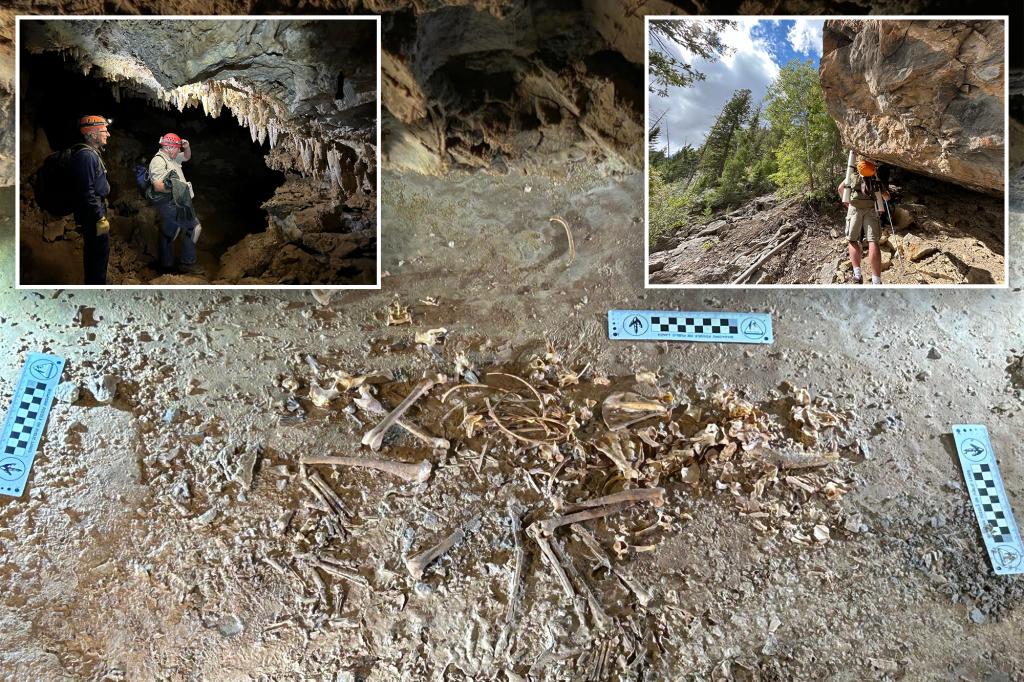A virtually full skeleton of a crimson fox courting again to the Ice Ages was found in a collapse northeastern Utah.
A crew of scientists from the Utah Division of State Parks and the USDA Forest Service’s Ashley Nationwide Forest, together with a gaggle of Utah cavers, made the invention at Whiterocks Cave within the Uinta Mountains at an elevation of about 8,600 ft.
“This specimen is without doubt one of the oldest immediately dated data of the crimson fox species,” mentioned Ice Age mammal knowledgeable Greg McDonald, a retired Nationwide Park Service paleontologist. “The primary in Utah, however among the many oldest in North America.”
Radiocarbon courting revealed that the fox’s skeleton is about 26,000 years outdated, which means it was already within the cave lengthy earlier than people began farming and even earlier than the Nice Pyramids of Giza have been constructed.
“It was a gorgeous specimen,” mentioned John Foster of the Subject Home Museum of Pure Historical past in Utah, who was the venture’s lead organizer. “Almost the entire animal lies the place it has been for thus lengthy, virtually each bone intact and nicely preserved. We do not typically see specimens like this.”
Based on Utah wildlife officers, crimson foxes (Vulpes vulpes) are essentially the most widespread terrestrial carnivore on the planet.
They appeared in North America from Eurasia between 300,000 and 130,000 years in the past. Since then, most crimson foxes in North America stay within the western and northern elements of the continent.
The stays have been present in a distant a part of the again of the cave, partially articulated and mendacity on their left aspect, Utah State Parks mentioned. It was given the identify “Roxy” after a museum-wide ballot.
The crew of paleontologists mentioned they aren’t positive how the fox ended up so deep within the cave.
“Maybe the commonest query is how the crimson fox bought virtually half a mile into the again of the collapse complete darkness,” mentioned Ashley Nationwide Forest geologist David Heron, who helped plan and lead the expedition.
Wildlife officers mentioned the fox skeleton was discovered a number of years in the past however was by no means collected due to the problem of getting the delicate bones out of the cave and down the mountain. After further planning efforts, the crew determined to go this previous summer time.
Utah State Parks
The whole expedition took the crew of 9 almost 16 hours.
Wildlife officers mentioned not many Ice Age animals have been present in northeastern Utah.
Earlier than Roxy, the one main discovery was a camel tibia found close to Vernal within the Eighties.
After scientists examine the bones, a few of them shall be on show on the Utah Subject Museum of Pure Historical past in Vernal.
“Roxy lastly noticed the sunshine of day once more after 26,000 years in complete darkness,” Foster mentioned. “We stay up for sharing it with guests quickly.”

